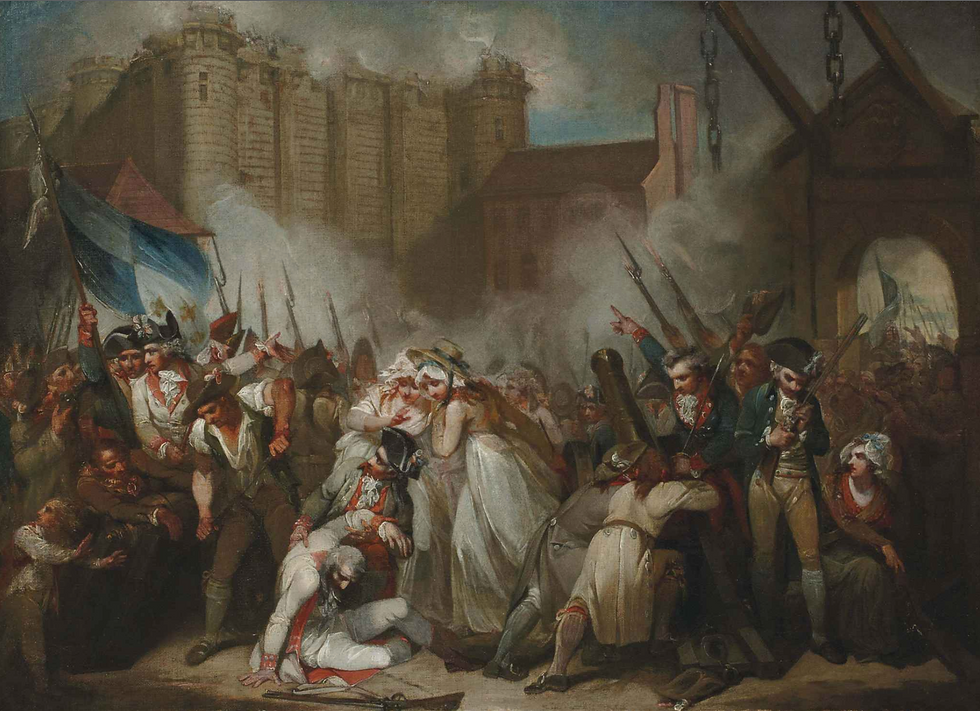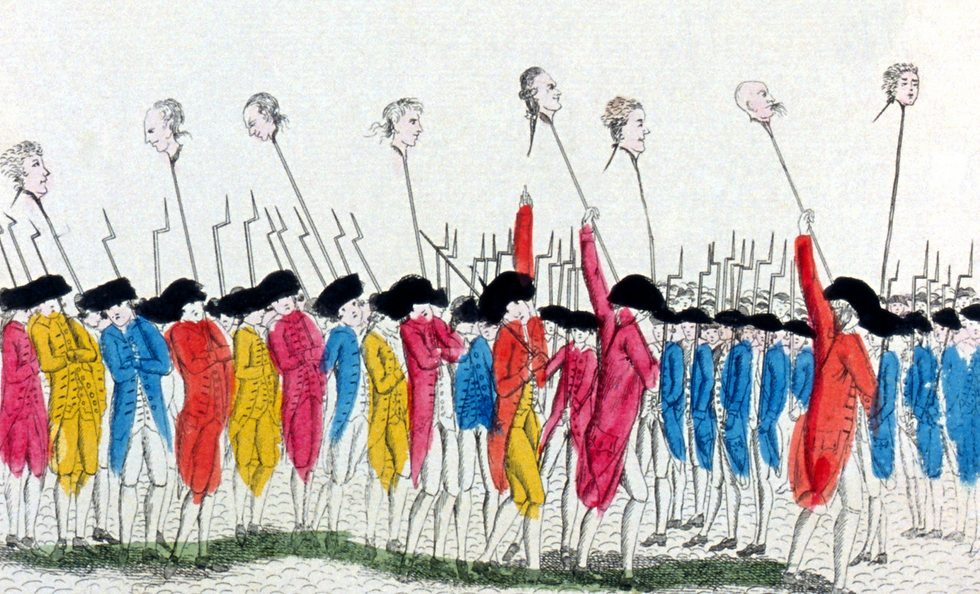The Bastille. A stone fortress towering over Paris. Home to prisoners and weapons. A symbol of the strength of force of the royal House of Bourbon. The fortress consisted of eight 30-meter-high towers, enforced by stone walls. The fortress was thought to be impenetrable by many, until the 14th of July, 1789.
The French Revolution (1789-1799) was a period of societal and political upheaval and reform. The tumultuous and complex period was marked by violence as monarchists, moderates and radicals claimed control. The revolution changed the dynamic between the rulers and their subjects in France, and brought the principles of liberty and equality to the attention of Europeans. While the revolution arguably failed, beginning with a monarch and ending with a one man dictatorship, it inspired future revolutions and its principles are still recognised in France’s current fifth republic. The Storming of the Bastille is marked as the beginning of the French Revolution. Not simply because of its repercussions, but for what it symbolizes. The mighty stood tall, looking down on Paris. It symbolizes the force and strength of the monarchy and their rule, holding political prisoners as well as weapons and ammunition. The smell of revolution was already in the air. France was near bankruptcy. After aiding the Americans in their fight for independence against their enemy, Britain, the French were low on funds. It didn’t help the matter that the monarchy continued to live their lavish lifestyles, as living conditions for the peasants of France deteriorated. The government began to tax the already impoverished French peasants, who had now begun to ponder on their limited rights and freedoms, and why they must respect a monarch who does nothing for them.


On the 14th of July, 1789, a mob gathered outside of the fortress. The angry mob gathered not to free any prisoners, but rather for the fortresses’ ammunition. After the prisoners’ governor refused to hand over the ammunition to the mob, the peasants stormed the Bastille. It said hundreds scaled the fortresses walls, and then released the drawbridge, allowing the mob to pour in. The mob was armed with muskets taken from the royal arsenal, and soldiers who supported the mob’s cause were armed with cannons to aid in the Bastille’s takeover. The takeover was gruesome. The prison guards were massacred, and their heads were paraded on pikes through Paris. The French monarchy’s symbols of force had now been stormed. It was the beginning of a bloody revolution in which the citizens attempted to free themselves of the tyrannical rule of monarchism.

Bastille day is commemorated in France as a national holiday on the 14th of July. It was the start of the revolution that paved the way for the freedom, liberty and equality of the French Republic. While the French revolution was over two-hundred years ago, its impact and legacy have lived far beyond then.
References
“Storming of the Bastille.” The British Library - The British Library, The British Library,https://www.bl.uk/learning/timeline/item106472.html#:~:text=The%20storming%20of%20the%20Bastille,liberty%2C%20equality%20and%20brotherhood).
Vrouvas, Michele. “Learn About the French Revolution as France Celebrates Bastille Day.” Study.com | Take Online Courses. Earn College Credit. Research Schools, Degrees & Careers, Study.com, Dec. 2017, https://study.com/blog/learn-about-the-french-revolution-as-france-celebrates-bastille-day.html.
Britannica, The Editors of Encyclopaedia. "Bastille". Encyclopedia Britannica, 12 May. 2020, https://www.britannica.com/topic/Bastille. Accessed 14 July 2022.
Image Sources
Unknown author, Unknown author, Public domain, via Wikimedia Commons, https://upload.wikimedia.org/wikipedia/commons/6/60/Storming_the_bastille_4_-_2.jpg
Henry Singleton, Public domain, via Wikimedia Commons, https://upload.wikimedia.org/wikipedia/commons/a/a8/Henry_Singleton_the_Storming_of_the_Bastille.jpg
Antoine-François Callet, Public domain, via Wikimedia Commons, https://upload.wikimedia.org/wikipedia/commons/c/ce/Antoine-Fran%C3%A7ois_Callet_-_Louis_XVI%2C_roi_de_France_et_de_Navarre_%281754-1793%29%2C_rev%C3%AAtu_du_grand_costume_royal_en_1779_-_Google_Art_Project.jpg

Comments